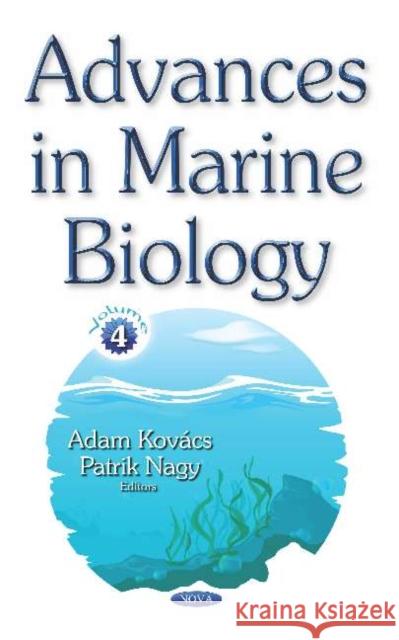Advances in Marine Biology: Volume 4 » książka
Advances in Marine Biology: Volume 4
ISBN-13: 9781536150421 / Angielski
The opening chapter describes the characteristics, challenges and opportunities pertaining to the Strait of Hormuz and reviews the present and future conditions of the marine environment in the region. Next, the authors analyze phytoplankton chlorophyll-a data obtained on 27 oceanographic cruises in the southern Gulf of Mexico between 1979 and 2000. Four cruises were selected to report variations of chlorophyll-a associated with hydrographic conditions (temperature and salinity) in surface waters, one in April 1983 and three in different seasons in 1987. Data on the abundances of >105 cells/L of the non-toxic benthic-planktonic widely distributed ubiquitous pennate diatom Cylindrotheca closterium as a causative agent of harmful algal blooms in the coastal waters of the northern Yucatan Peninsula, with an emphasis on four marinas, are presented in the following chapter. Following this, studies are presented wherein it is shown that substrate type, species diversity, stem and root density, predator, seasons, and mate display activity affect the zonal and spatial distribution as well as the diameter of a burrow in semi-terrestrial crabs. The authors go on to highlight the applications of the most active compounds present in marine macroalgae known as polyphenols, as well as their isolation using green extraction methods. Their bioactive properties are reviewed and their potential for health improvement is evaluated. The penultimate chapter focuses on tributyltin, a toxic compound with broad-spectrum activity toward diverse marine species, and how it effects marine environments. The closing chapter examines the several molecular methods which have been evaluated for species identification, phylogenetic analyses, and determining the population structure of Thunnus.











